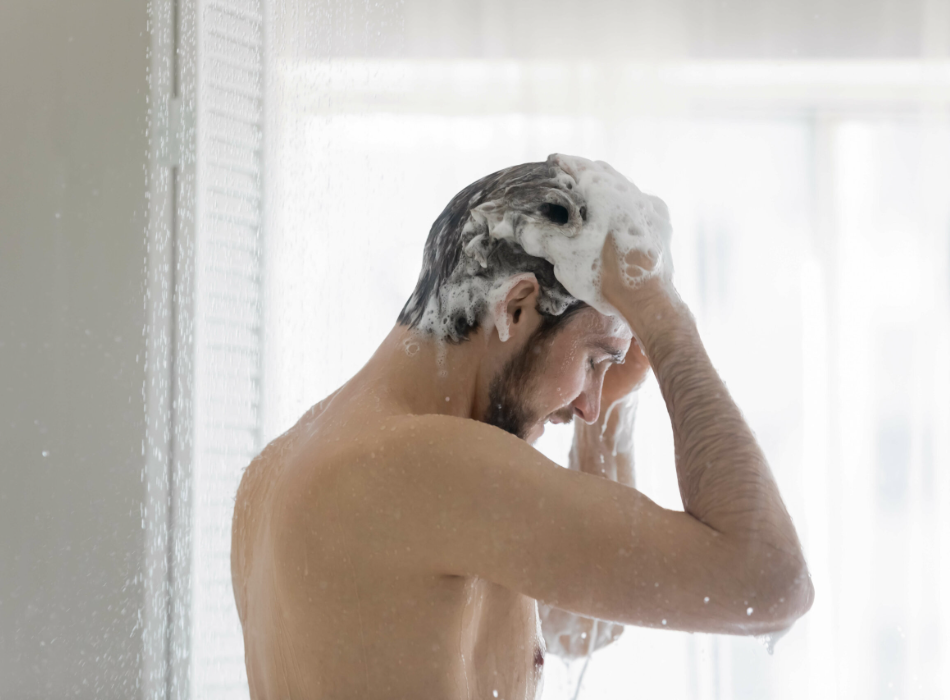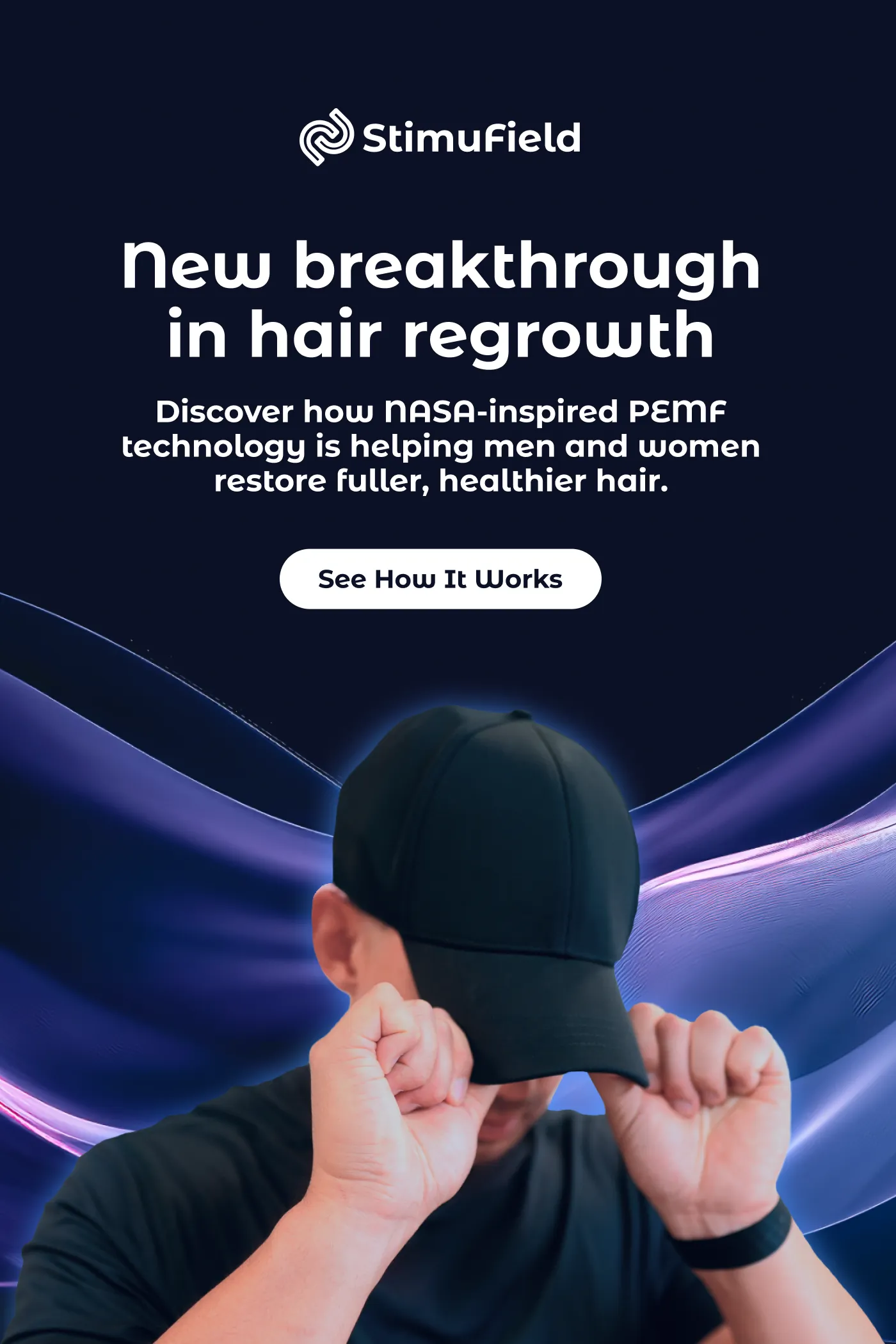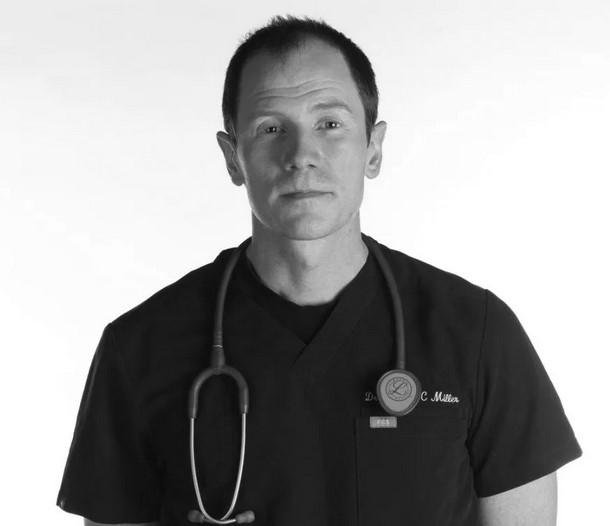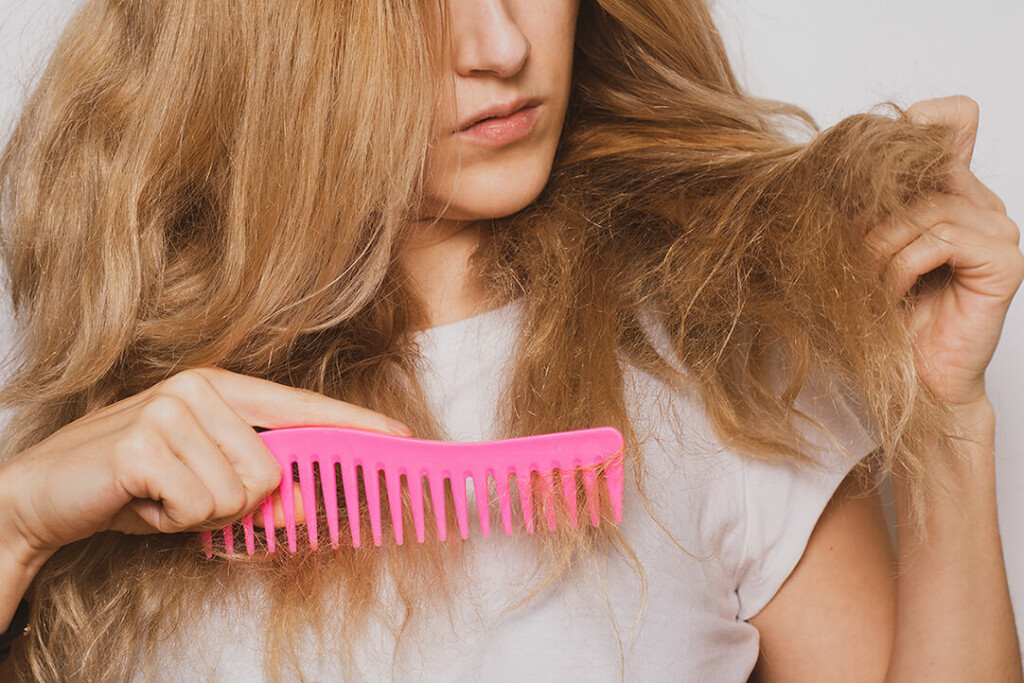Minoxidil is a hair loss treatment approved by the Food and Drug Administration (FDA). It’s often sold as a serum or a foaming product but exists in other forms, too. It’s sometimes added to certain hair care products, like shampoos. Some people even take minoxidil pills or use minoxidil creams.
Given the various types of minoxidil products you can choose from, it’s probably not surprising to find out that some work better than others. Serums and foaming products, which are usually between 2 and 5 percent, are very different from minoxidil shampoo, which is less concentrated and applied differently.
What is minoxidil?
Minoxidil is a medication that first became available in the 1960s. At the time, no one had actually created any treatments for hair loss – and minoxidil was actually being tested as a medicine that could lower blood pressure.
It wasn’t until the 1970s that the medication started being prescribed for more than a few weeks at a time. (1) It was only then that people started to realize that minoxidil could cause hair growth.
Until that point, minoxidil was an oral medication that the FDA had approved to reduce blood pressure. But, given its unexpected side effect of promoting hair growth, research changed to explore it in other ways. Different types of topical minoxidil were tested throughout the 1980s, and the FDA eventually approved this drug as a treatment for hair loss – specifically, androgenic alopecia.
Minoxidil for androgenic alopecia
Androgenic alopecia (also known as male pattern baldness) is a type of hair loss caused by a mixture of genetic and hormonal factors. As the name implies, hair loss occurs in distinct patterns. People typically start to see hair loss at their hairline, temples, and crown before balding occurs.
Minoxidil is thought to be able to stimulate hair growth by increasing blood flow to the scalp. (2) This drug might also regulate hair-related growth factors, hormones, and your body’s inflammatory response.
At the moment, minoxidil is the only FDA-approved topical hair loss treatment for androgenic alopecia. Other treatments include finasteride, a dihydrotestosterone (DHT)-blocker that’s taken orally, and low-level laser therapy, which is administered through a cap, comb, or headband-shaped device.
Common minoxidil formulas and products
Minoxidil foam and liquid are the two most common types of minoxidil solutions. The FDA has approved them for the treatment of androgenic alopecia as long as they’re sold in concentrations of 2 or 5 percent.
These days, though, you’ll often be able to choose from a variety of different minoxidil formulas. A study says that minoxidil products are usually sold in concentrations that range between 2 to 12.5 percent. (3) In contrast, minoxidil shampoos – which are newer to the minoxidil market – tend to have lower concentrations of minoxidil (between 1 and 2 percent).
Before you jump at the minoxidil product with the highest concentration, though, you should be aware that less can be more when it comes to minoxidil. The study mentioned earlier says that 5 percent minoxidil solution is actually more effective than the 10 percent version. (3) Additionally, people reported an increase in side effects like increased hair shedding and scalp irritation when using the more concentrated minoxidil solution.
What happened to minoxidil pills?
Minoxidil pills still exist, but they’re not as common as a hair loss treatment these days. One of the main reasons for this is because of a side effect known as hypertrichosis – which essentially means that hair growth occurs everywhere – not just on your head.
While it might not sound so bad to have a slightly bushier beard or fuller eyebrows, hypertrichosis can affect any part of your body. You could certainly end up with a bushier beard, but you might also end up with hair on your back, shoulders, cheeks, or forehead.
A recent study reported that 27 percent of people taking minoxidil in oral form over a 24-week period experienced hypertrichosis. (4) Only a small number of people using a topical form of minoxidil had the same problem.
What about minoxidil cream?
Minoxidil cream is a product that’s mentioned in old scientific publications from the 1980s. This is around the same time minoxidil clinical trials were occurring. Based on a journal letter to the editor in 1983, it seems that minoxidil cream, which was essentially minoxidil mixed with metosyn ointment, was being assessed along with other topical minoxidil formulations. (5)
That same publication implies that minoxidil creams weren’t very good at treating androgenic alopecia (or any other form of hair loss). As we know, the Food and Drug Administration eventually approved minoxidil serums — and it seems that most people had little interest in perfecting the formula for minoxidil cream after that.
These days, you do occasionally still see minoxidil creams sold or mentioned in scientific research. For example, a review mentioned a study in which minoxidil cream was used alongside microneedling to treat androgenic alopecia. (6) Another study reported using minoxidil lotion in their assessment of microneedling and minoxidil for treating male pattern baldness. (7)
There aren’t many minoxidil creams currently being sold. In general, you can assume that any that are will be experimental formulations. While they probably won’t harm you, minoxidil creams aren’t FDA-approved and may not be as effective as official hair loss treatments like minoxidil foams and serums.
Minoxidil shampoo: Can it help with hair loss?
Minoxidil shampoos generally only have 1 percent minoxidil, which means that they’re already weaker than both minoxidil foams and serums. The FDA doesn’t consider a product with 1 percent minoxidil to be suitable for use in treating male pattern hair loss.
However, even with 2 percent minoxidil shampoos, the real issue is that this product is only left on your head for a few minutes at a time. Since minoxidil is absorbed into the scalp, this doesn’t give it a long time to actually enter your body. In comparison, foams and liquids are left on your skin for hours at a time – giving them hours to have an effect on your hair follicles.
Research is now exploring how effective minoxidil shampoo can be, but so far, studies are very limited. Studies that look at minoxidil serums and foams generally report positive results after around 2 to 4 months. However, the researchers from a study reported that they needed longer than 3 months to determine whether or not minoxidil shampoo was effective in treating hair loss. (8)
Ultimately, there’s no reason to believe that minoxidil shampoo can’t help you treat hair loss. But so far, research seems to indicate that it will take longer than foam or liquid products to have any effect. If you decide to use minoxidil shampoo, make sure it’s not the only product you’re using. It’s likely best if you try it while simultaneously using another hair loss treatment.
Which minoxidil should I use?
If you’re only going to pick one minoxidil product, pick one of the FDA-approved minoxidil solutions. This means a 2 or 5 percent version of minoxidil, which can come as a liquid serum or foam. There’s nothing wrong with trying a minoxidil cream or minoxidil shampoo, but these should only be considered as complementary items: They aren’t hair loss treatments on their own.
Minoxidil foam vs. liquid: Which is more effective?
There’s some debate on whether liquid minoxidil is better than foam minoxidil (or foam is better than liquid). Technically, both of these products are the same – they’re both applied to the area where you’re trying to combat hair loss and left on for at least a few hours at a time. However, they do contain slightly different ingredients. If the foam version makes you feel a bit itchy or irritated, you might find the liquid serum doesn’t, and vice versa.
A journal article says liquid minoxidil and foam minoxidil seem to produce equivalent results in studies that have compared them to one another. (9) However, liquid minoxidil is thought to be absorbed better by the scalp – and may produce better results as a consequence.
Using minoxidil shampoo
Given the lack of research available on this product, we wouldn’t recommend using minoxidil shampoo. If you’re really determined to use minoxidil shampoo, though, here are a few things you should know.
Minoxidil vs. minoxidil shampoo side effects
As minoxidil shampoo is a fairly new product, there’s not much known about the side effects it can cause. Possible minoxidil shampoo side effects are almost certainly likely to be mild, though, like other minoxidil product side effects.
A study in 2016 mentioned that the minoxidil in minoxidil shampoo might make your skin dry, itchy, red or irritated. (8) None of the participants in this study experienced notable amounts of these side effects, but if you do, you may want to switch to a more natural, gentler shampoo.
Can you mix minoxidil with shampoo?
Minoxidil shampoo is a relatively new product, so chances are that you might not actually find it sold anywhere near you. You might have contemplated making your own minoxidil shampoo at home by simply mixing minoxidil into your shampoo.
At the end of the day, there’s no minoxidil police to stop you from doing this — but that doesn’t mean it’s a great idea. Minoxidil is most effective when used according to FDA-recommendations. Also, using minoxidil and minoxidil shampoo at the same time might be too much for your scalp and increase the likelihood of side effects. If you’re going to use minoxidil shampoo, it might be best to use it alongside a non-topical hair loss treatment, like finasteride or pulsed electromagnetic field therapy.
Finding the right hair loss shampoo
Minoxidil shampoo might sound great for androgenic alopecia, but it isn’t the only shampoo that can help you fight hair loss. Many shampoos can help improve the health of your scalp and increase the amount of nutrients that reach your hair follicles.
For example, a journal publication reported that both miconazole nitrate shampoo and ketoconazole shampoo can improve scalp health by counteracting common skin problems, like dermatitis. (10) What does dermatitis have to do with anything, you might ask? Well, according to a study, people with androgenic alopecia often have dermatitis, too. (11) If left untreated, dermatitis can affect your scalp and hair follicles, impeding hair regrowth and preventing any hair loss treatment you’ve started from working.
There are additional benefits to certain shampoos, too. A publication reported that ketoconazole might also work to combat androgenic alopecia. (12) Ketoconazole won’t just improve your scalp health — according to this study, there’s a good chance it will also improve hair thickness.
Other shampoos contain natural hormone-blockers. They’re intended to work by blocking DHT, just like finasteride. Of course, the natural DHT-blockers in these shampoos are typically present in much lower concentrations than finasteride, so don’t expect the same results. The lower levels of DHT-blockers can also be a good thing, though: This also means it’s likely to produce fewer side effects compared to finasteride.
If you’re looking for a more natural shampoo, you might want to check the ingredients list for DHT-blocking plants like saw palmetto, nettle root, and green tea. A study also mentioned that black pepper, curcumin, pumpkin seed, and certain species of mushroom are natural DHT-blockers as well. (13)
At the end of the day, there’s no hair loss shampoo that can treat androgenic alopecia on its own. However, all of these products can help boost hair growth when combined with a hair loss treatment like minoxidil.
Which shampoo should I use with minoxidil?
If you’re using minoxidil, you’ll need to apply it twice a day (once in the morning and once in the evening). You generally want to apply it onto a clean scalp, which means washing or at least rinsing your hair once or twice a day.
Most people don’t wash their hair more than once a day, and some people only wash it once or twice a week! Usually, washing your hair very often wouldn’t be recommended as it’s likely to dry your hair and skin out, putting you at an increased risk for scalp conditions. However, minoxidil is going to be most effective when applied onto a clean, dry scalp.
To get around this conundrum, the Food and Drug Administration recommends using a mild shampoo. (14) While it might be tempting to use minoxidil shampoo, it’s a much better idea to use a mild shampoo that can help support your scalp microbiome.
Mild shampoos generally contain moisturizing ingredients, like natural oils, as well as nourishing proteins and antioxidant-rich botanical extracts. The ideal shampoo will have little to no parabens, sulfates, or silicones.
Takeaway
Minoxidil shampoo isn’t the same as other minoxidil products and shouldn’t be your first choice if you’re trying to treat androgenic alopecia. These shampoos are typically sold at low concentrations and only stay on your scalp for a few minutes. Minoxidil serums and foams, which stay on your scalp for hours, are much more effective.
Research into minoxidil shampoo is promising, but very limited. Like any other hair loss shampoo, minoxidil shampoo can help promote hair growth and improve scalp health when combined with proven treatments like low level laser therapy, minoxidil or PEMF therapy.
If you’re not sold on the benefits of minoxidil shampoo, you’re not alone. Many people prefer using DHT-blocking shampoos. These products are kind of like a more natural, less concentrated, topical version of finasteride.
Out of all the shampoos you can choose from, though, ketoconazole might be your best bet. Many people have both androgenic alopecia and dermatitis. If you’re one of them, this shampoo is likely to have the biggest impact on improving your scalp health.
At the end of the day, there’s nothing wrong with using minoxidil shampoo: just don’t expect miracles. You’re better off using minoxidil serum with a mild, natural shampoo, instead.








